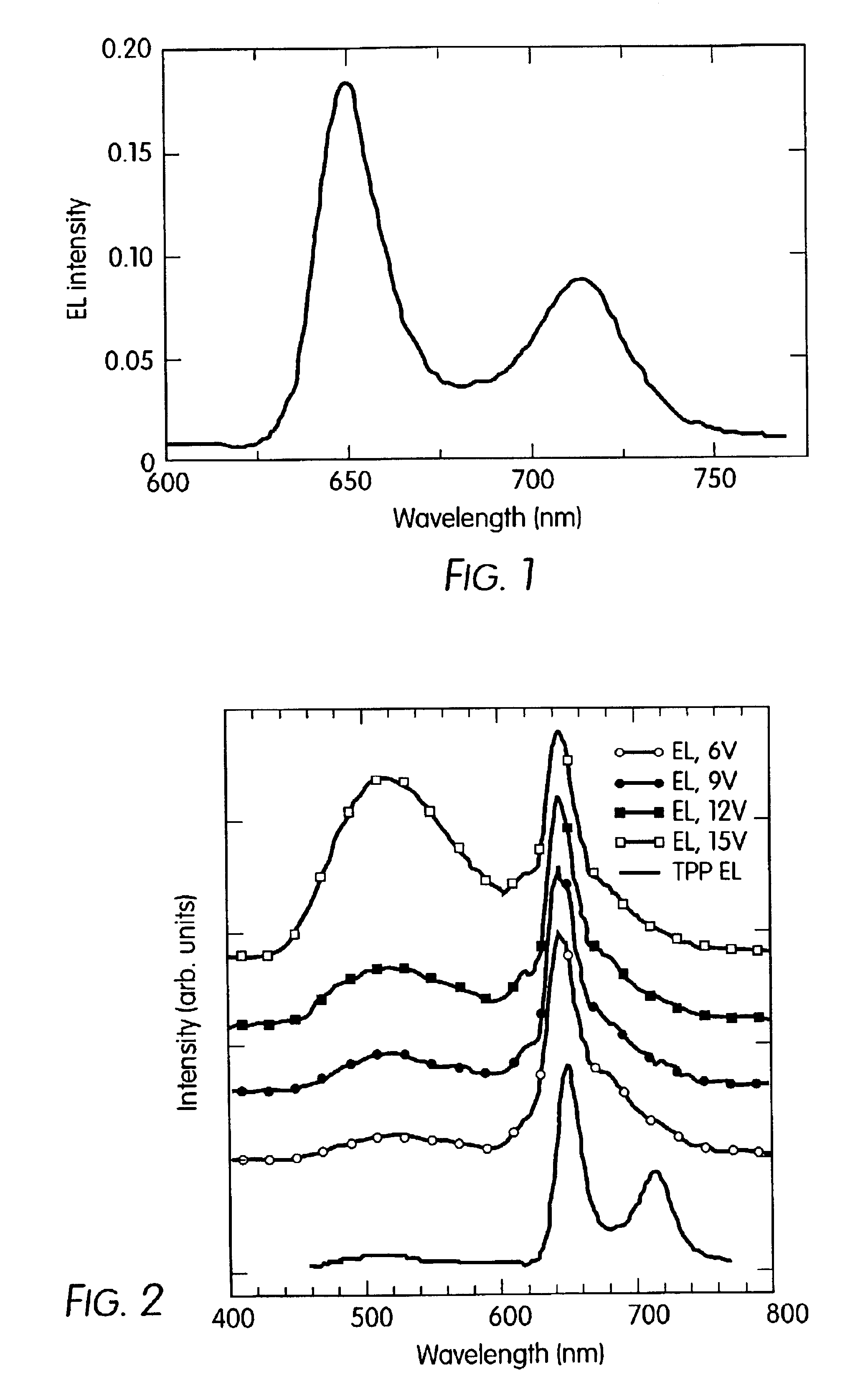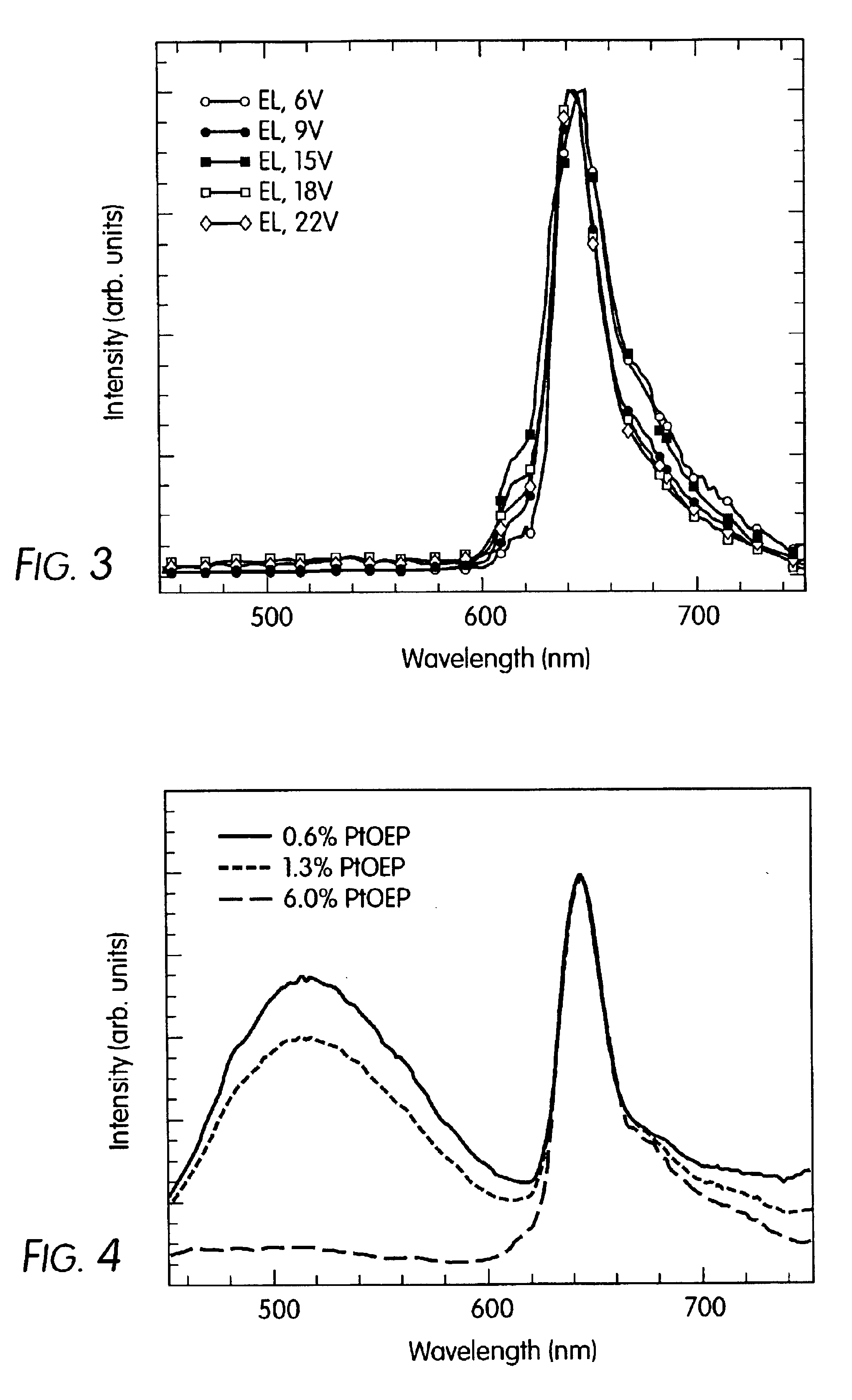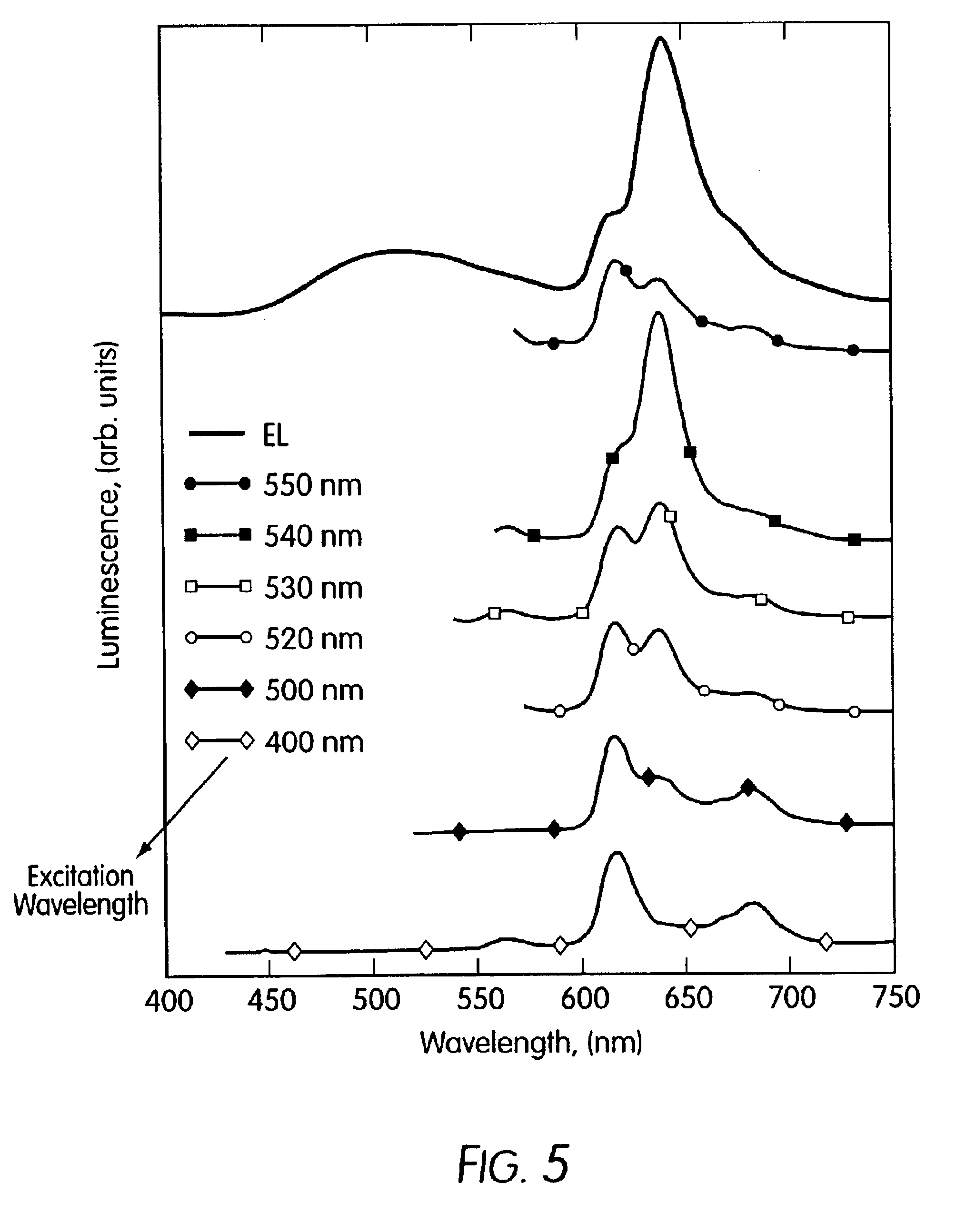OLEDs doped with phosphorescent compounds
a technology of phosphorescent compounds and oleds, which is applied in the direction of discharge tube luminescnet screens, natural mineral layered products, transportation and packaging, etc., can solve the problems of narrow band at 713 nm, short shelf life of such devices, and inability to meet the needs of display applications, etc., to achieve the effect of great shelf life stability
- Summary
- Abstract
- Description
- Claims
- Application Information
AI Technical Summary
Benefits of technology
Problems solved by technology
Method used
Image
Examples
Embodiment Construction
The present invention will now be described in detail for specific preferred embodiments of the invention, it being understood that these embodiments are intended only as illustrative examples and the invention is not to be limited thereto.
The present invention is directed to OLEDs in which emission from the device is obtained via a phosphorescent decay process wherein the phosphorescent decay rate is rapid enough to meet the requirements of a display device. As a representative embodiment of the present invention the emission layer is comprised of an emitting compound having a structure represented by Formula I:
wherein M=Pt; a=1; b=0; c=1; X=C; and R8=H; and R9=R10=Et (ethyl). In particular, this compound, platinum octaethylporphine (PtOEP), has the chemical structure of formula II:
The advantage of selecting a dopant compound such as PtOEP as the emissive material of an OLED is based, inter alia, on two particular facts. First, the photoluminescent quantum yield for this molecule ...
PUM
| Property | Measurement | Unit |
|---|---|---|
| transparency | aaaaa | aaaaa |
| transparency | aaaaa | aaaaa |
| temperature | aaaaa | aaaaa |
Abstract
Description
Claims
Application Information
 Login to View More
Login to View More - R&D
- Intellectual Property
- Life Sciences
- Materials
- Tech Scout
- Unparalleled Data Quality
- Higher Quality Content
- 60% Fewer Hallucinations
Browse by: Latest US Patents, China's latest patents, Technical Efficacy Thesaurus, Application Domain, Technology Topic, Popular Technical Reports.
© 2025 PatSnap. All rights reserved.Legal|Privacy policy|Modern Slavery Act Transparency Statement|Sitemap|About US| Contact US: help@patsnap.com



